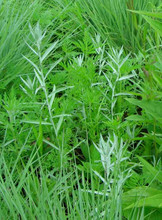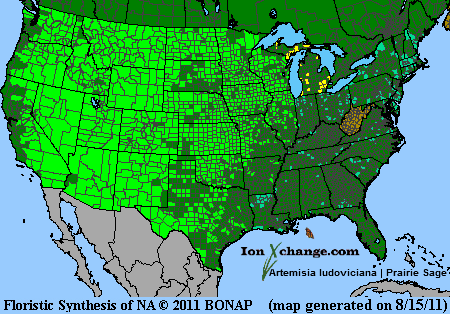 Loading... Please wait...
Loading... Please wait...- Home
- SEEDS
- SEED MIXES
- BUY PLANTS
- Info Request
-
Educational Videos
- Greenhouse Transplanting Demonstration
- Native Seed Cleaning demonstration at Ion Exchange Native Seed and Plant Nursery
- Attracting Butterflies
- Bidens - Bidens cernua Harvest Video
- Big Blue Stem Harvest
- Butterfly Milkweed Video
- Button Blazingstar - Liatris aspera Video
- Buttonbush - Cephalanthus occidentalis Video
- Canada Anemone - Anemone canadensis Harvest Video
- Cardinal Flower - Lobelia cardinalis Video
- Control Burn - Wildflower Field
- Cream Gentian - Gentiana flavida
- Culver's Root - Veronicastrum virginicum Video
- Cup Plant - Silphium perfoliatum Video
- Dormant Seeding | Planting
- Earthyman's Favorite Wildflowers Video
- Eco-Friendly Golf Course Seed Mix
- Floating Islands
- Fringed Loosestrife - Lysimachia ciliata Video
- Giant Yellow Hyssop - Agastache nepetoides Video
- Indiangrass - Sorghastrum nutans Video
- Iowa Prairie Partner Program
- Leadplant - Amorpha canescens (Potted) Video
- Meadow Blazingstar - Liatris ligulistylis
- Midland Shooting Stars - Dodecatheon meadii Video
- Native Plant Nursery Field Irrigation Experiment
- Nodding Onion - Allium cernuum Video
- Ohio spiderwort - Tradescantia ohiensis Video
- Old Man's Beard - Clematis virginiana blooms Video
- Oxeye Sunflower - Heliopsis helianthoides Video
- Prairie Spiderwort - Tradescantia bracteata
- Purple Coneflower - Echinacea purpurea Video
- Rain Garden or Water Garden Video
- Rattlesnake Master - Eryngium yuccifolium Video
- Riverbank Stabilization - Wetland Plants
- Rose Mallow - Hibiscus militaris Video
- Rosinweed - Silphium integrifolium Video
- Royal Catchfly - Silene regia
- Showy Tick Trefoil - Desmodium canadense Video
- Sneezeweed - Helenium autumnale Video
- Swamp Betony - Pedicularis lanceolata Video
- Swamp Milkweed - Asclepias incarnata Video
- Sweet Blackeyed Susan - Rudbeckia subtomentosa Video
- Tall Coreopsis - Coreopsis tripteris Video
- Urban Butterfly Garden
- Wild Bergamot - Monarda fistulosa Video
- Wild Geranium - Geranium maculatum Harvest
- Wild Goldenglow - Rudbeckia lanciniata Video
- Wild Petunia - Ruellia humilis Harvest Video
- Woodland Knotweed - Polygonum virginianum Video
- Yellow Coneflower - Ratibida pinnata Video
- Blog
- Resources
- Policies
Contact Us
Phone:
563-419-0837
or 563-535-7231
Email:
hbright@ionXchange.com
Browse Products
Add to Wish List
You Recently Viewed...
Our Newsletter
Product Description
Prairie Sage (Artemisia Ludoviciana) - Found throughout the Tallgrass Prairie Region and well throughout North America. Can grow to 40 inches in height and prefers disturbed areas along roads and railways, dry areas on rocky, sandy or gravelly loams; blooms from August through September.
Thrives in mesic to dry soils and does best with a little bit of shade, though it does tolerate full sunlight well. Very aggressive in any plot.
Named in memory of Artemisia. wife of Mausolus, ancient king of Caria and ludoviciana from the latin form meaning "of Louisiana" (most likely "St. Louis" in this particular case).
| Sun Exposure | Savanna, Prairie |
| Soil Moisture | Mesic, Dry Mesic, Dry |
| Bloom Time | Summer, Fall July, August, September |
| Bloom Color | Green |
| Max. Height | 3 - 4 feet |
| Wetland Code | UPL |
| Germ Code | C(30), D |
| Seeds Per Packet | 1000 |
| Seeds Per Ounce | 250,000 |
History:
Another one of the more widely used native prairie plants, Native Americans used Prairie Sage for both medicinal and ceremonial purposes. The Dakota Sioux liked using it to begin most of their ceremonies as they believed it drove away evil spirits. Some tribes believed that by bathing in Prairie Sage water, you could restore yourself to a normal status after breaking a taboo or touching a sacred object. Other Central Plains cultures used it as a bed for storing their pipes. Early settlers used it by burning it before the body of a deceased person was carried into the church for the funeral. It served as an incense in the days before embalming. An infusion of Prairie Sage was taken by Arikara women to stop profuse menstruation and relieve the associated pains. Other tribes used an infusion to help ease stomach pains and a tea made from this species was used by many other tribes to treat tonsillitis and sore throat. Still others used it in a poultice to treat open sores. Another use of burning prairie sage was to drive off mosquitoes and other pesky flying insects. Ironically, the sage we use today is not derived from this species or even this plant family. Our modern herb is a member of the Mint Family.
Edible Uses:
Leaves and flowering heads are used as a flavouring or garnish for sauces, gravies etc. A herb tea is made from the leaves and flowering heads. Seed. No further details are given but the seed is very small and fiddly to use.
Medicinal Uses:
The leaves are astringent. They were commonly used by the N. American Indians to induce sweating, curb pain and diarrhoea. A weak tea was used in the treatment of stomach ache and menstrual disorders. Externally, a wash of the leaves was applied to itching, rashes, swellings, boils, sores, etc. The wash was also applied to eczema and as an underarm deodorant. A poultice of the leaves can be applied to spider bites, blisters and burst boils. A snuff of the crushed leaves has been used to treat headaches, the sinuses and nosebleeds.
Other Uses:
The plant can be burnt to repel mosquitoes. The plant makes a useful ground cover plant once it is established. The leaves can be placed in the shoes as a foot deodorant. An infusion of the leaves has been used as an underarm deodorant. The soft leaves can be used as a toilet paper.













